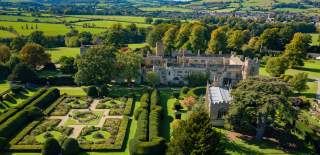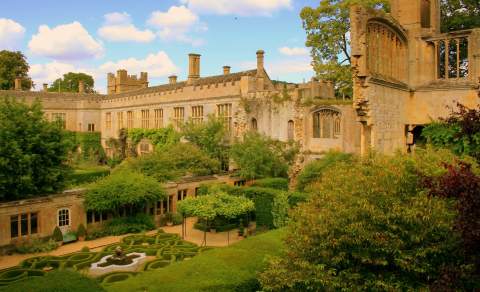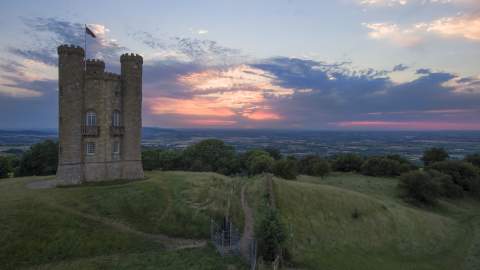Historic Houses & Museums
Immerse yourself in the history of the Cotswolds at one of the many Cotswolds museums, great historic houses, or just walk through the streets and down the back lanes within the beautiful Cotswold stone towns and villages.
There is so much history to take in that you’ll be sure to find a historic story that rewards your interests.
'Cotswolds' is a combination of two very old English words. Everyone's pretty much agreed that 'Wolds' are gentle hills. And most people agree that 'Cots' are sheep enclosures. So 'Cotswolds' probably just means an area of gentle hills with plenty of sheep around.
The Cotswolds hills are criss-crossed with dry stone walls. The picturesque Cotswold landscape is completed with hidden river valleys and distinctive market towns and villages made of the famous Cotswold stone. Many Cotswold villages have enigmatic names such as The Slaughters, Stow-on-the-Wold, The Oddingtons, Ampney Crucis and Guiting Power.
Centuries ago the Cotswolds was made wealthy by the wool trade, and the results of that wealth can be seen in the many fine manor houses and churches throughout the area. The county is rich in Neolithic remains with about 80 long barrows of the Cotswold-Severn type. Belas Knap is one of the largest, while you can actually crawl inside the fine example of Hetty Pegler's Tump. There are also a number of causewayed camps dating from this period with a well-researched example at Crickley Hill. The Bronze Age is represented by the remains of some 400 round barrows concentrated on the Cotswold. This area is also home to the majority of the 32 Iron Age hill forts identified in Gloucestershire, many in strong positions on the Cotswold scarp. Leckhampton Hill has a fine accessible example from this period. Near Barrow Wake was found the superb brooch and mirror from the Birdlip grave group, now displayed in Gloucester City Museum.
Two main Roman roads, Ermin Street and the Fosse Way, crossed Gloucestershire and many miles are still in use today. Gloucester and Cirencester were the first Roman administrative centres in the county and this is still reflected in their present-day street plans. Substantial Roman settlements existed at a number of places including Dymock, Dorn and Bourton-on-the-Water. Chedworth has the county's best-known example of a luxurious villa and the lesser-known Great Witcombe villa is in an equally delightful situation. The Corinium Museum at Cirencester has one of the finest collections of Roman antiquities in Britain. Cheltenham, Bath, Oxford and Stratford-upon-Avon - all nearby - offer further opportunities for shopping and cultural activities and make this an excellent touring base. It's a place to stay, not to rush through.
Please see the list of heritage attractions and historical places of interest below.



